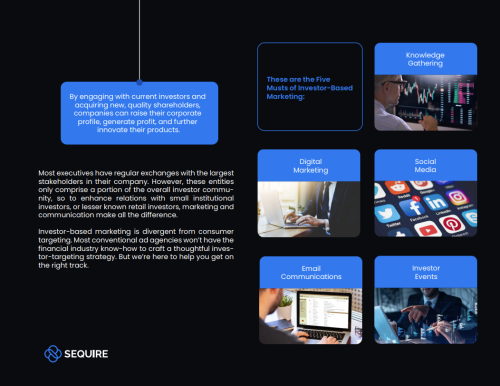Given our team’s different backgrounds and experiences, we thought it would be fun to work together to develop a top 10 list of the biggest changes in IR during the last decade. Here goes (in no particular order!):
1. The shrinking sell side and high number of analysts leaving Wall Street to pursue jobs in IR – including our own Gabe Ratcliff and some of our former covering analysts. Financial story-telling, valuation analysis and financial acumen are now table stakes in IR, so these skills are highly valued.
2. The rise of index/passive investing has given new dimension to shareholder relationship management, for both fundamental and governance engagement.
3. Increasing investor focus on the ‘E’ and the ‘S’ in ESG. This is one of our favorite changes given Etsy’s business and social impact alignment. Ensuring that an IR team is as knowledgeable about these issues as traditional business and financial topics, and deeply engaged in them, is increasingly important.
4. One of the multiple outgrowths of Mifid II is the rise of buy-side corporate access, another new dynamic to manage regarding investor interactions. Knowing which firms are managing engagement in-house, what events they are co-ordinating and who to contact represent a new set of IR responsibilities and relationships.
5. We’ve seen significant improvement in public company workflow and collaboration – from Workiva to Google Docs and Slack – making us all more efficient on a daily basis. We’ve also seen some solid advancements in the IRO’s technology tool kit.
6. The use of algorithmic trading leading to extraordinary trading volumes and volatility, particularly for small to mid-cap technology stocks like Etsy.
7. The growth of third-party data providers and ‘consultants’ who connect investors with information that may or may not be accurate. Understanding what information is available on your company and having strategies for commenting are now very important. This provides an added level of complexity for guidance setting and expectation management.
8. The importance of data analytics and insights for creating effective Street messaging. In our case this means partnering throughout the organization more than ever to find the golden nuggets – be they in operations, finance, customer metrics, technology/product development, sustainability or our people organization.
9. Social media’s impact on managing company brand internally and externally, and IR’s role as a key communicator of the brand. Seamless integration with marketing, communications, HR, legal and others are critical to ensuring the company’s brand, access to human capital and/or valuation isn’t tarnished by poor management of all media channels.
10. Contracting investment horizons and long-term ‘active’ shareholders are less long term than they were in the past. What used to be a five to 10-year horizon for concentrated, long-only investors has become one to two years, as incentives for near-term performance outweigh long-term investment strategies.
While this is a robust list of items that have changed significantly in the past decade, we also know that ‘the more things change, the more they remain the same’. Some examples that come to mind for us include:
- Earnings calls still mostly follow the traditional format
- Stockwatch and targeting tools, while more sophisticated, are still often limited in their effectiveness
- Roadshows still look like roadshows, with less videoconferencing than one might have expected to see given technological advances
- Investor conferences still (mostly) follow the same format we have seen for many years.
Patty Cruz, Gabriel Ratcliff and Deb Wasser are the IR team at Etsy










